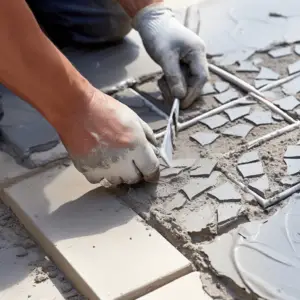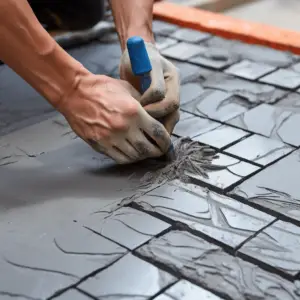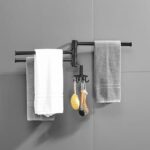Thinset mortar, also known as thinset mortar, is adhesive cement used to secure floor/wall tiles to concrete surfaces. It is used to install tile over cement, fiberboard, and anti-fracture or waterproofing membranes. It makes it possible for tiles or stones to stick/bond to the backer board.
Thinset cement is designed to adhere well in a thin layer that’s usually not greater than 3/16” thick. Most thin-sets have polymer and latex additives in them meant to enhance the bonding strength. As tiles get larger and longer, sufficient mortar coverage becomes increasingly crucial.
Table of Contents
So, Is Thinset Waterproof?

While thinset is not waterproof, it isn’t water-soluble either. Unlike mastic, thinset won’t return to its liquefied state when subjected to moisture. It is impermeable in that it can be used in wet areas such as showers and even outdoors.
The difference between thinset and any other mortar is that thinset does not contain lime. Instead, it contains a moisture-retaining agent and generally retains more air pocket in comparison to other mortars.
The fact that thinset works to get the tile to stick to a surface means that it’s an acceptable practice to use it for shower floor. Thinset may be used as an adhesive if you want to tile your shower or use heavier materials. This is simply because it contains cement, fine sand, and water-retaining properties that make it ideal for wet surfaces.
If you’re planning to use thinset outside, then keep in mind there’re many options to choose from, and it’s important to pick the right one. You’ll almost always use a modified thin-set mortar for an adhesive outdoor patio.
On that note, can you add water to the dry thin set? Thinset mortar is hot where you’re working, you may use cold water to mix the thinset. Note that adding water to stiff thinset in an attempt to make it work will end up breaking the microscopic cement crystals. Consequently, you will not be as strong as it could be. That’s why it’s recommended to only mix as much as you can use in a short time.
How Long Before Thinset Set
While temperature, humidity, and air in a room often dictate how long it takes to dry out, thinset generally is secured and ready to walk on or grout in 24-48 hours. Some installers and home specialists usually recommend waiting 72 hours for tiles applied to floors.
You might also be wondering what happens in the long run if the thinset is applied too dry or too wet. When applied too dry, the thinset is stronger but on the flip side, the bonding to the tile is poorer. Too wet thinset, meanwhile, means that the thinset is weaker and could crumble under load, even though suction bond tile and thinset are generally greater. In most cases, the downsides associated with using too thick thinset are cracks, lippage, and delamination.
Specific Thinset for Specific Application
You don’t want to assume that any thinset will work just fine for your installation project. Depending on the characteristics of your individual project, you’ll realize that they’re different thinset to use for that application. Several things go into the type of thinset you choose for your project.
The first thing to consider is the type of material you’re installing; is it ceramic, natural stone, metal, glass, or pavers. Also, think about the kind of substrate it’s going over. This could be existing tile, cement, wood, terrazzo, cement backer board, etc.
Use the right outdoor tile glue when gluing tiles to your new patio’s concrete. Modified-thin-set mortar is preferable for adhesive on outdoor patios.
Thinset is commonly applied to non-concrete surfaces with cement board or similar backing. This boarding is more reliable than wood or drywall, but it requires an extra step/material. Discuss the job with a professional installer or specialist, including the materials. This helps choose the right product.
Tile Thinset
Organic and made of materials derived from the earth, thinset is inexpensive and can be obtained either in wet, dry, pre-mixed, or powdery form. Moreover, thinset is available in either modified or unmodified versions. Unmodified thinset is composed of Portland cement, fine sand, and water retention properties.
Modified thinset, on the other hand, is composed of the same elements, alongside liquid latex polymer to assist with strength and enhance the working time.
One feature of thinset that’s both a pro and a con is that it’s slow to set. On the bright side, this is a plus in that it accommodates a longer working time to fix any misaligned tiles. On the flip side, it can be a con in that when dealing with vertical applications like kitchen and bathroom walls; tiles backslashes. Also, the extra time often allows the tile to sag.
Thinset Pros and Cons

Pros
- Thinset is a stronger material in comparison to mastic, making it an ideal option for horizontal applications such as floorings that involves a lot of pounding.
- Dry-mix thinset is relatively affordable and easy to use.
Cons
- Thinset often takes a while to dry, which can cause vertically installed tiles to start dropping during the curing process
- Thinset requires considerable labor to remove during demolition
- Unused thinset will be thrown out as it cannot be saved.


